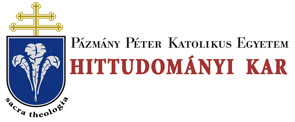Folia Theologica 15. (2004)
Szabolcs Anzelm Szuromi: Rules concerning bishops in the Decretales Pseudo-Isidorianae, especially the regulation on the death of bishops
150 SZ. A. SZUROMI is attributed to Pope Anaclet is remarkable, because it describes the theoretical structure of the ecclesiastical hierarchy of one country. The office of primate takes an important place in this description as the head of the national Church.22 III. The Death of the Bishop and its effect The person of the bishop was indispensable in the daily life of the diocese. Therefore his death meant an enormous blow for the Church, particularly for his own diocese. The death of a bishop had a direct effect on the governance of the diocese, on the administration of its goods, and moreover on the liturgical organization of burial. 1. The temporal goods of the diocese were managed by the bishop. Canon 24 of the Council of Antioch (314) explains how important is the distinction between the property of the bishop and the property of his diocese.23 The bishop can dispose of his personal property and name his heirs. The ecclesiastical (diocesan) wealth is not only managed by the bishop, but he can also take part in it. However, he must use these goods for his diocese, to farm well in the country, and the whole property has to remain in the hands of the Church, as we can read in canon 25 of the mentioned Council of Antioch. The care of the poor received significant stress in this canon. Management has to be transparent and the bishop must allow possibility for the presbyters and deacons to observe the progress of farming. When the function of archdeacon appeared, he bestitutio fuit, sed unus omnibus praefuit. Hoc tamen providendum instituit, ne in villis aut in castellis vel modicis civitatibus instituerentur episcopi, ne vile eorum nomen fieret. HINSCHIUS 39. 22 Anacletus, Ep. II c. 26. Provintiae autem multo ante Christi adventum tempore divise sunt maxima ex parte, et postea ab apostolis et beato Clemente praedecessore nostro, ipsa divisio est renovata, et in capite provintiarum, ubi dudum primates leges erant saeculi ac prima iuditiaria potestas, ad quos qui per reliquas civitates commorabantur, quando eis necesse erat qui ad aulam imperatorum vel regum confugere non poterant, vel quibus permissum non erat, confugiebant pro oppressionibus vel iniustitiis suis ipsosque apellabant, quotiens opus erat, sicut in lege eorum praeceptum erat, ipsis quoque in civitatibus vel locis nostris patrirchas vel primates qui unam formam tenent, (...) HINSCHIUS 79 23 PITRA, J.B., luris ecclesiastici Graecorum historia et monumenta, I. Romae 1864. (repr. Roma 1963.) 467.
